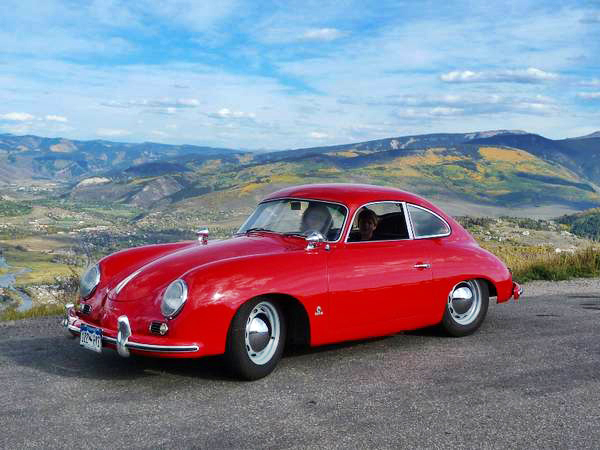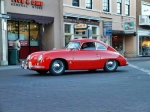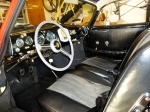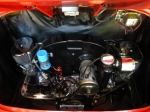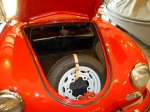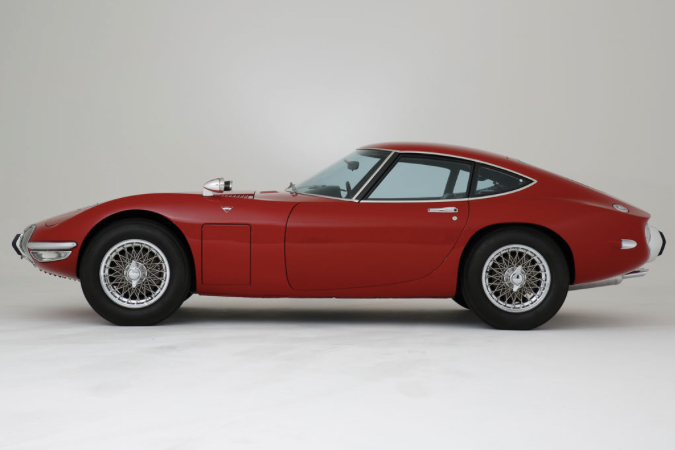In the collector car world, there a few cars as consistently infallible as a Porsche 356, both in terms of their mechanical dependability and their investment reliability. Perhaps the purest among these, the ones that originated in Ferry Porsche’s head, are the pre-A models that were built between its rollout in 1951 and 1956, when the more “modern” 356A was introduced. With all air-cooled Porsches experiencing stratospheric appreciation, the few good examples left will soon be out of reach for all but the Seinfelds and other blue-chip collectors. Today’s example comes from 1954 and while it’s strayed from the original in just about every aspect—color, interior, wheels and motor—it wouldn’t be prohibitive to return the car to its as-born state. With original paint and interior there to match and the location of its original motor known, it would be a relatively easy finish to what is a very good foundation. Otherwise, the car could be kept as is for what appears to be an excellent driver. There are some minor rust issues, but nothing that needs immediate attention. The same goes for the interior blemishes. That it has its original Telefunken radio is a big bonus, regardless of whether it works or not. With not much investment, this could easily be a six-figure car. At the same time, its $85,000 asking price may be a bit strong for its current state, but that could literally change tomorrow at the rate these are climbing. Find it here on The Samba in Edwards CO.
Tag: Porsche 356
LOT 131 – Aston Martin DB2/4 Coupé
Without Reserve – €150,000 – €200,000 [moto+match estimate: €200,000]
The DB2/4 was introduced in October 1953, and it provided a lot more room over its predecessor. This was accomplished in part by raising the roofline slightly over the DB2 and reducing the fuel tank capacity by two gallons to add to rear seat room. Other notable changes included a wraparound rear windscreen, larger front and rear bumpers, and the addition of a hatchback, which is believed to be the first fitted to a production car. 140 bhp, 2,922 cc DOHC six-cylinder engine, four-speed manual transmission, independent front suspension, live rear axle with parallel arms and coil springs, and four-wheel drum brakes. Wheelbase: 2,510 mm
- Chassis no. LML/980
- Engine no. B6A/50/147
- A splendid example of Aston Martin’s gentleman’s tourer
- Includes Aston Martin Heritage Trust Certificate and factory build sheet
- Less than 300 miles accumulated since restoration
Lot 133 – 1968 Toyota 2000GT
€545,000 – €620,000 [moto+match estimate: €650,000]
Chassis MF10-10174 was produced on 19 January 1968, finished in Pegasus White, and delivered new to its home market of Japan as a right-hand drive model. This 2000GT, being offered today from its native country, has recently completed a restoration, where it was repainted in a striking shade of burgundy and fitted with chrome Borrani wire wheels. The brilliant paint colour is beautifully accented by the chrome details on the car, and it attractively showcases the design features of this stunning sports car. Surly this would be a wonderful example to drive and enjoy, as it showcases Toyota’s brilliant European-inspired design. The 2000GT is a hugely important car in the history of the automobile. Without the 2000GT, there might not have been a Honda NSX or a Nissan 240Z, and the industry on the whole might have looked very different from what it is today. The 2000GT shattered the preconceived notions of what the world thought a Japanese car could be, and it changed the automobile industry for the better. Collectors have finally come to realise the importance of these wonderful little sports cars, and they have become quite desirable in recent years. This 2000GT oozes a sporting elegance that is wonderfully stated by its dark red paint and Borrani wire wheels, which work to accentuate its brilliant design. It would be a wonderful example to drive and enjoy. 150 bhp, 2,000 cc Yamaha DOHC hemi-head inline six-cylinder engine, triple Solex twin-choke side-draft carburettors, five-speed fully synchromesh manual transmission, four-wheel independent suspension, and four-wheel power-assisted Dunlop disc brakes. Wheelbase: 2,329 mm
- Chassis no. MF10-10174
- Beautifully restored in dark red with chrome Borrani wire wheels
- Japan’s iconic sport’s car

Lot 165 – 1956 Porsche 356 A Carrera 1500 GS/GT Speedster by Reutter
€780,000 – €900,000 [moto+match estimate €900,000]
- Chassis no. 82189
- Engine no. 90638
- Original matching-numbers Carrera engine
- Rare combination of Carrera GS and GT trim levels
- Copy of original Kardex warranty card
- Desirable Rudge wheels
- Ideal for Porsche club events and vintage rallies
Lot 166 – 1969 De Tomaso Mangusta
€160,000 – €210,000 [moto+match estimate €250,000]
The Mangusta offered here was beautifully restored for its present owner with painstaking attention to detail, and it is likely amongst the finest examples in existence. It is freshly completed and has been refinished in what is believed to be its original factory colours, a dazzling green (simply called Lime, found below a later colour change to red) over black leather upholstery, which is a combination that is oh-so-appropriate for a sports car produced at the wild end of the Swinging Sixties. Unlike many of these cars, which have been hot-rodded over the years, this example has always been preserved in very much its original specification, which is something that the owner held true to during its restoration. The early 289 V-8 and ZF1 transmission, which is the same as was used in the GT40, were fully rebuilt, and care was taken to restore all components in their original finish. The car retains the original sand-cast wheels, with their slightly rough texture, and dials lettered in Italian, suggesting that this Mangusta may have originally been a European-delivery example. Importantly, the car retains its very rare original jack and tool roll, as well as the remote-starter button under the bonnet, allowing a mechanic to turn over the engine during maintenance. This Mangusta is currently domiciled in the UK, and it will be sold with its V5C registration and recent MOT test certificate. It is interesting to note that mangusta translates to “mongoose”, which is one of the few natural enemies of the cobra. The name is indicative of the performance to which the ferocious Mangusta aspired and which this beautifully restored example can undoubtedly achieve. 271 bhp, 289 cu. in. overhead-valve Ford V-8 engine, five-speed ZF manual transmission, unequal length tubular wishbone front suspension with coil springs and anti-roll bar, wide-base unequal length wishbone rear suspension with trailing arms, coil springs, and anti-roll bar, and four-wheel power-assisted Girling disc brakes. Wheelbase: 2,500 mm
- Chassis No. 8MA890
- A beautiful, muscular icon of the 1960s
- The most desirable quad-light, early-production iteration
- Equipped with the high-performance Ford 289 V-8
- Freshly restored in its stunning original colour
- Offered with its original jack and rare tool set
Lot 189 – 1973 Fiat 130 Coupé by Pininfarina
Without Reserve €10,000 – €15,000 [moto+match estimate €18,000]
- Chassis no. 130BC 0002020
- Long-term ownership by Francesco Stanguellini
- Fewer than 32,000 kilometres from new
- On display for many years in the Stanguellini Museum
